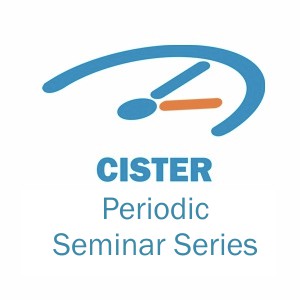 Seminar Series 2015 - Ramiro Robles
Seminar Series 2015 - Ramiro Robles
Retransmission diversity: an entropic view of conflict resolution and resource allocation in future semi-centralized wireless access networksCISTER, Porto, Portugal
ABSTRACT:
The Maxwell’s demon paradox was proposed in 1867 as a challenge to the second law of thermodynamics. A sudden and unexplained increase of temperature was achieved (theoretically) by means of a simple information measurement process of the molecules of a gas in a container. The debate of the “demon” problem regained attention a century later by providing the link between classical physics (thermodynamics) and the growing fields of information theory and quantum computers. One main result can be derived from the study of the Maxwell’s demon problem: information erasure is the fundamental thermodynamic irreversible process that compensates the unbalance of entropy created by the operation of the “demon”. Network diversity multiple access (NDMA) is a scheme for contention resolution in wireless networks that is based on this principle: avoid as much as possible a ”dumb” erasure or discarding of information. In NDMA, signals with collision are not discarded as in conventional random access protocols. Instead, they are stored in memory for further processing. Additional retransmissions are induced and collected by the system to create an adaptive full-rank multiple-input multiple-output (MIMO) system from which contending signals can be conveniently recovered. NDMA is the algorithm with the highest potential throughput in the literature and it also shows a superior energetic efficiency than ALOHA-type solutions. The energy consumed by the “induced” retransmissions is proved to be balanced out by the reduction of back-off retransmissions for error control. This presentation focuses on the recent developments for this family of algorithms, the existing issues being tackled and future work. The use of successive interference cancellation (SIC) has allowed the algorithm to surpass the barrier of M packets per time slot, where M is the number of antennas at the receiver. This is so far the largest throughput achieved by any random access protocol, with promising applications in wireless local area networks (WLANs) and mainly in dense wireless sensor and actuator networks (DWSANs). Further improvements of this algorithm are envisioned using more thermodynamic principles, such as availability of channel and queuing state information. This scenario is typical in future networks with cognitive, self-organized and software-defined radios. NDMA and its extensions using blind separation, interference alignment and stochastic geometry constitute serious candidates for the next generation of multiple access and semi-centralized resource allocation systems.
EVENT PHOTOS:
At CISTER's Facebook page
DOWNLOAD:
PDF Presentation (450kB)
CISTER's main roles:









 Ramiro Robles
Ramiro Robles